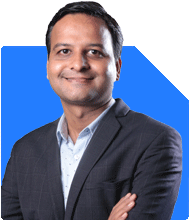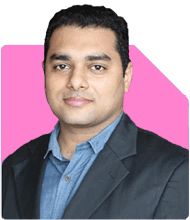44-year-old investor: Should I switch my SIPs to a new small and mid-cap fund portfolio?
Ramalingam Kalirajan |10870 Answers |Ask -Follow
Mutual Funds, Financial Planning Expert - Answered on Oct 03, 2024
He has an MBA in finance from the University of Madras and is a certified financial planner.
He is the director and chief financial planner at Holistic Investment, a Chennai-based firm that offers financial planning and wealth management advice.... more

I am 44 year old. It’s been 7 years I started doing sip with 40000. in below funds. 1. mirae asset mid and small cap 10k 2. HSBC small cap 20k 3. Kotak flexi cap 10k Now I want to stop the above fund and start investing 40k for next 7-8 years 1. Nippon India Small Cap Fund 10k 2. Quant Small Cap 10k 3. Motilal Oswal midcap fund 10k 4. SBI Contra fund 10k So is this a good move or do I need to make any changes in future fund choices? Please suggest.
However, before making any changes, let’s evaluate your current strategy:
Mid and Small Cap Focus: Mid-cap and small-cap funds generally provide higher returns but come with higher volatility. Since you’ve already held these for seven years, the compounding effect should have worked in your favour.
Flexi Cap for Stability: Flexi-cap funds allow fund managers to adjust between large, mid, and small caps, adding a safety net for your portfolio. This brings stability while maintaining growth potential.
Now, moving to your proposed changes:
Evaluating Your New Fund Choices
You’re looking to switch to a different set of funds while keeping the Rs 40,000 investment amount intact. Let’s evaluate this new mix:
Small Cap Funds (Rs 20,000): You plan to invest half of your SIPs in small-cap funds. Small caps offer higher growth but can be volatile, especially in the short term. Given your 7-8 year horizon, they can work in your favour, but it’s important to balance this with less risky investments. An excessive focus on small-cap funds may expose you to high risk, particularly in market downturns.
Mid Cap Fund (Rs 10,000): Mid-cap funds are a good middle ground. They have the potential for high returns with slightly lower volatility than small-cap funds. A mid-cap allocation can boost your portfolio, but again, this should not be too dominant.
Contra Fund (Rs 10,000): Contra funds work on a contrarian investment strategy, investing in undervalued stocks with the expectation of long-term appreciation. This is a unique addition that can offer diversification. However, contra funds require a long investment horizon to realize gains, as they depend on market corrections.
Insights on Your Strategy
While the new fund choices reflect a strong growth-oriented strategy, there are some potential concerns:
High Exposure to Small Caps: Allocating Rs 20,000 to small-cap funds increases your risk profile. Small caps are more volatile and tend to underperform during market corrections. A better approach might be to reduce your exposure to small caps and diversify into more stable categories like large-cap or flexi-cap funds.
Missing Large-Cap Stability: Your current selection excludes large-cap funds, which are vital for balancing risk in an equity portfolio. Large caps offer steady growth with lower volatility, making them essential for risk management, especially when nearing retirement age.
Contrarian Strategy Consideration: While contra funds can offer good returns, they rely heavily on timing and market corrections. Given that you’re looking at a 7-8 year horizon, you may need to closely monitor its performance.
Actively Managed Funds Over Index Funds
You’ve wisely chosen actively managed funds over index funds. Actively managed funds allow fund managers to take advantage of market fluctuations, adjusting their strategies to outperform indices. Index funds, while low-cost, lack the flexibility to react to market conditions. Actively managed funds provide better growth potential over the long term, especially in volatile markets.
Suggested Adjustments to Your Strategy
While your proposed fund choices are growth-focused, it’s important to consider a more balanced approach. Here are some adjustments that can help:
Add Large-Cap Funds: Large-cap funds provide stability and consistent returns. A 20-25% allocation to large-cap funds can help reduce volatility in your portfolio, offering a cushion during market downturns.
Reduce Small-Cap Exposure: Consider limiting your small-cap exposure to 10-15% of your total SIP amount. This will ensure you still benefit from the growth potential of small caps while protecting your portfolio from excessive risk.
Keep Flexibility with Flexi-Cap Funds: Instead of removing flexi-cap funds from your portfolio, you might want to retain them. Flexi-cap funds allow fund managers to move between large, mid, and small caps, giving them the flexibility to navigate market cycles effectively.
Long-Term Investment Horizon
Given your investment horizon of 7-8 years, equity mutual funds are a good fit. However, it's important to remember that as you approach retirement, you’ll want to gradually shift towards safer investments. Over the next 3-4 years, consider gradually increasing your exposure to balanced funds or debt funds to reduce risk.
Regular Reviews and Rebalancing
Once your new investment strategy is in place, make sure to review your portfolio regularly. The market changes over time, and so do your financial needs. A yearly review with a Certified Financial Planner can help ensure your investments remain aligned with your goals.
Final Insights
Your plan to switch your SIPs reflects a growth-focused approach, which is excellent given your long-term horizon. However, consider the following adjustments for a more balanced portfolio:
Reduce small-cap exposure to avoid excessive volatility.
Add large-cap funds for stability.
Retain flexi-cap funds for flexibility.
This diversified strategy will provide you with both growth potential and risk management, ensuring you build a solid corpus for the future.
Best Regards,
K. Ramalingam, MBA, CFP,
Chief Financial Planner,
www.holisticinvestment.in
https://www.youtube.com/@HolisticInvestment
You may like to see similar questions and answers below
Nikunj Saraf | Answer |Ask -Follow
Mutual Funds Expert - Answered on Mar 01, 2023
Ulhas Joshi |280 Answers |Ask -Follow
Mutual Fund Expert - Answered on Mar 28, 2023
Hemant Bokil | Answer |Ask -Follow
Financial Planner - Answered on Jan 16, 2024
Reetika Sharma |417 Answers |Ask -Follow
Financial Planner, MF and Insurance Expert - Answered on Oct 05, 2025
Dr Dipankar Dutta |1837 Answers |Ask -Follow
Tech Careers and Skill Development Expert - Answered on Dec 05, 2025
Dr Shyam Jamalabad |108 Answers |Ask -Follow
Dentist - Answered on Dec 05, 2025
Dr Shyam Jamalabad |108 Answers |Ask -Follow
Dentist - Answered on Dec 05, 2025
Dr Shyam Jamalabad |108 Answers |Ask -Follow
Dentist - Answered on Dec 05, 2025
Dr Dipankar Dutta |1837 Answers |Ask -Follow
Tech Careers and Skill Development Expert - Answered on Dec 05, 2025
Ulhas Joshi |280 Answers |Ask -Follow
Mutual Fund Expert - Answered on Dec 05, 2025
Dr Dipankar Dutta |1837 Answers |Ask -Follow
Tech Careers and Skill Development Expert - Answered on Dec 04, 2025
Ravi Mittal |676 Answers |Ask -Follow
Dating, Relationships Expert - Answered on Dec 04, 2025
Anu Krishna |1745 Answers |Ask -Follow
Relationships Expert, Mind Coach - Answered on Dec 04, 2025
Anu Krishna |1745 Answers |Ask -Follow
Relationships Expert, Mind Coach - Answered on Dec 04, 2025



























